Content |
|---|
Description:
17 to 20 cm.. height.
The Orange-chinned Parakeet (Brotogeris jugularis) has the forecrown, crown, back of the neck and upper cheeks, bright green with blue tinge; lores and lower cheeks, duller green with olive tinge. feathers in the the mantle and the top of the back, olive-green with more green tips; Scapulars Green tipped bronce-marrones; lower back and rump, bluish green. Lesser coverts and median, foliage color, with a patch large in the shoulder; Primary coverts blue, greater coverts green. Flight feathers greenish blue above, Blue-Green below with less yellow in the underwing-coverts.
Bright orange stain in the throat, which flying becomes very evident. Underparts brighter yellowish green, more blue from the belly up to the undertail-coverts. Upper, the tail bluish green; by below more pale and yellowish.
Bill color pale horn; bare periophthalmic whitish; irises dark brown; legs pink.
The plumage of both sexes are similar.
- Sound of the Orange-chinned Parakeet.
Description 2 subspecies:
-
Brotogeris jugularis exsul
(Todd, 1917) – Has the back and rump olive, and dorsally the wing darker, In addition the stain in the neck smaller.
-
Brotogeris jugularis jugularis
(Statius Müller, 1776) – Nominal.
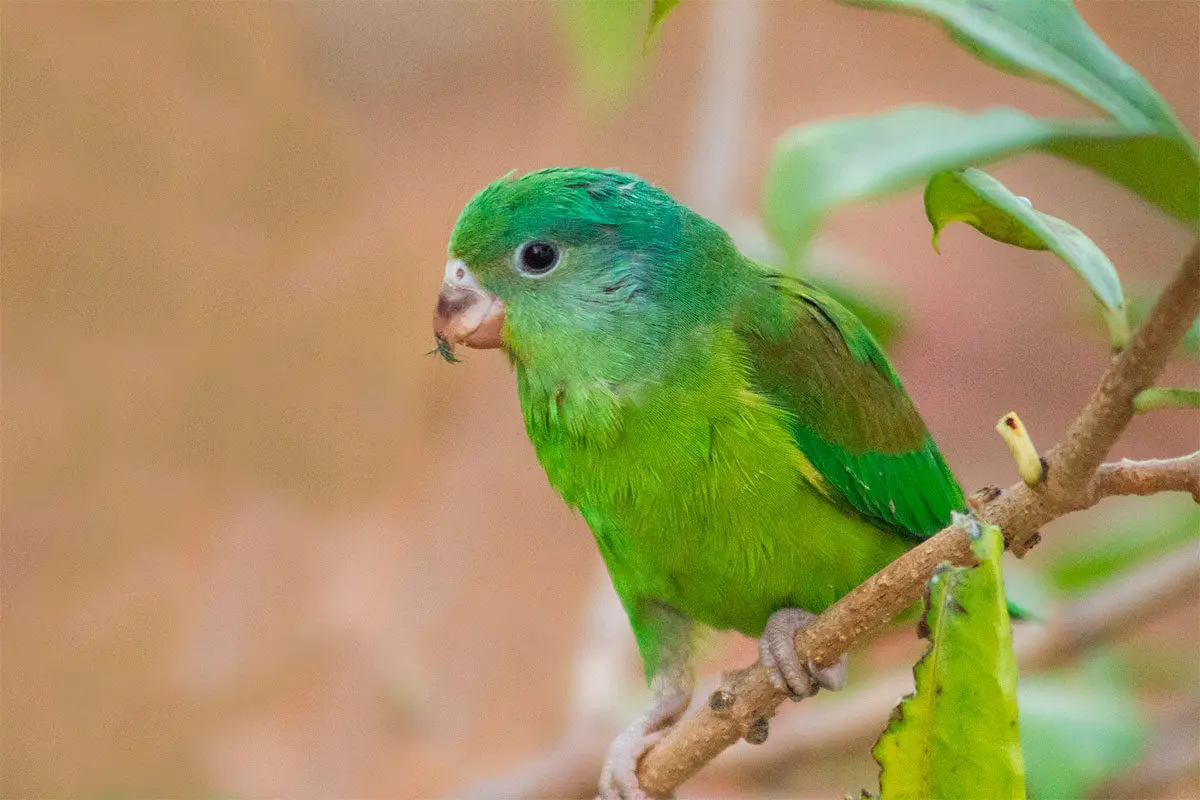
Habitat:
The Orange-chinned Parakeet prefer, generally, forests or partially wooded habitats with bushes, deciduous forest, dry and wet, plantations, edge of light and areas cultivated or grasslands with trees large. It tolerates human presence and it attends the parks and gardens in cities. Most numerous in partially deforested areas, mainly in tropical zone, Although it amounts to subtropical vegetation zones in (for example, the Cordillera de Guanacaste, Costa Rica. Observed at altitudes of 500 m (Guatemala), 900 m (Honduras), 1.360 m (El Salvador), 1.200 m (Costa Rica), 1.000 m (Venezuela). Usually, in pairs or small groups, with large gatherings where abundant food. More gregarious outside of breeding season. Rest communally on rubbers (Ficus sp.) or palms.
Son very good flying, in nature there have been flights of up to 45 kilometres per hour.
Reproduction:
Nest from May to July in tree hollows (including old Woodpecker nests) and termite mounds. A laying, usually, compose of four to six white eggs, What hatch after a few 26 days of incubation. The chicks leave the nest about 42 days after birth.
Sometimes colonial. Reproduction reported in March in Mexico; January in El Salvador; February-April in Panama; January-March in Colombia.
Food:
Feeds of seeds and fruits trees of Bombax, Ficus, Muntingia, Byrsonima, Cecropia, Ceiba, flowers and nectar of Erythrina, raft and guava. It feeds mainly in the canopy. They can be destructive crops (for example, Mango).
Distribution:
Size of the area of distribution (reproduction / resident): 781.000 km2
This parakeet occupies the lowlands of the southern Pacific slope of Mexico, in Oaxaca and Chiapas (reports of Warrior dubious) and areas adjacent to Guatemala and El Salvador, lowlands of the Honduran Pacific, and slopes of the Pacific and Caribbean Nicaragua.
In Costa Rica is mainly a bird of your side of the peaceful, but comes into the lowlands of the Caribbean adjacent, to the South of the Lake Cocibolca, spreading through the Pacific lowlands and the Caribbean from Panama, including the Islands Coiba and Cebaco.
Are also distributed to the West of the Andes in Colombia, to the south, to Atrato River and in the Caribbean lowlands of the region of Santa Marta and Serrania del Perija and further South, to the top of the Magdalena River Valley and lowlands of Norte de Santander and Arauca.
In Venezuela It extends from the North of the Orinoco in Zulia, Táchira North, Merida Western, the coastal mountains Yaracuy and Carabobo and in the lowlands of Portuguese, Cojedes, barinas, Apure and Guarico.
The Orange-chinned Parakeet are, mainly, residents although they roam locally in some areas (for example, in El Salvador after breeding season).
Usually of common to abundant though apparently uncommon at the local level (for example, Oaxaca).
Captured for the trade and common in captivity in countries of the range.
Distribution 2 subspecies:
-
Brotogeris jugularis exsul
(Todd, 1917) – Venezuela and Colombia in Arauca and Norte de Santander.
-
Brotogeris jugularis jugularis
(Statius Müller, 1776) – Nominal.
Conservation:
State of conservation ⓘ |
||
|---|---|---|
 Minor Concern ⓘ
(UICN)ⓘ
Minor Concern ⓘ
(UICN)ⓘ
| ||
• Current category of the Red List of the UICN: Least concern.
• Population trend: Stable.
Justification of the population
Partners in Flight estimate your total population in 500,000-4,999,999 individuals (A. Panjabi in litt., 2008).
Justification of trend
They suspected that the population is stable in absence of evidence of any decline or threatens substantial.
"Orange-chinned Parakeet" in captivity:
Very common in captivity does time. It is a bird very shy and easily alarmable but with the passage of time creates a good emotional relationship with his owner. It can be aggressive with other smaller parrots.
Alternative names:
– Orange-chinned Parakeet, Bee Bee Parakeet, Brown-shouldered Parakeet, Mexican Parakeet, Orange chinned Parakeet, Tovi Parakeet (English).
– Toui à menton d’or, Perruche à front orange, Perruche tovi, Toui à menton jaune (French).
– Tovisittich, Goldkinnsittich (German).
– Periquito-de-queixo-laranja (Portuguese).
– Catita Churica, Chocoyo Barbinaranja, Perico Ala Amarilla, perico ala-amarilla, perico barbinaranja, Periquito Barbinaranja, Periquito Bronceado, Periquito de Alas Doradas (español).
– Periquito Bronceado (Colombia).
– Periquito barbinaranja (Costa Rica).
– perico barbinaranja (Honduras).
– perico ala amarilla, perico ala-amarilla, Periquito Barbinaranja (Mexico).
– Chocoyo Barbinaranja (Nicaragua).
– Perico Ala Marrón (Venezuela).
scientific classification:
– Order: Psittaciformes
– Family: Psittacidae
– Genus: Brotogeris
– Scientific name: Brotogeris jugularis
– Citation: (Statius Müller, 1776)
– Protonimo: Psittacus jugularis
Images Orange-chinned Parakeet:
Sources:
– Avibase
– Parrots of the World – Forshaw Joseph M
– Parrots A Guide to the Parrots of the World – Tony Juniper & Mike Parr
– Birdlife
– Photos:
(1) – A pet Orange-chinned Parakeet in Panama By Nelson de Witt from USA (IMG_2058Uploaded by Snowmanradio) [CC BY-SA 2.0], via Wikimedia Commons
(2) – An Orange-chinned Parakeet feeding in Panama By Brian Gratwicke (Flickr: Orange-chinned Parakeet) [CC BY 2.0], via Wikimedia Commons
(3) – Orange-chinned parakeets in Panama City, Rep. of Panama. Aproximadamente tres o cuatro meses de edad By Ricaurte Puga (Own work) [GFDL or CC BY-SA 4.0-3.0-2.5-2.0-1.0], via Wikimedia Commons
(4) – Brotogeris jugularis en El Salvador tomando Coca Cola By Kevinmenendez (Own work) [GFDL or CC BY 3.0], via Wikimedia Commons
(5) – This is the smallest parakeet in El Salvador know as Catalnica, Perico de Lesson, Orange-chinned Parakeet (Brotogeris Jugularis) By ceasol (Flickr) [CC BY-SA 2.0], via Wikimedia Commons
(6) – Orange-chinned Parakeet | Brown wing parakeet (Brotogeris jugularis exsul) by Fernando Flores – Flickr
(7) – Conurus jugularis Dev. & Cast. = Brotogeris jugularis (Müller, 1776) by Francis de Laporte de Castelnau [Public domain], via Wikimedia Commons
– Sounds: (Xeno-Canto)
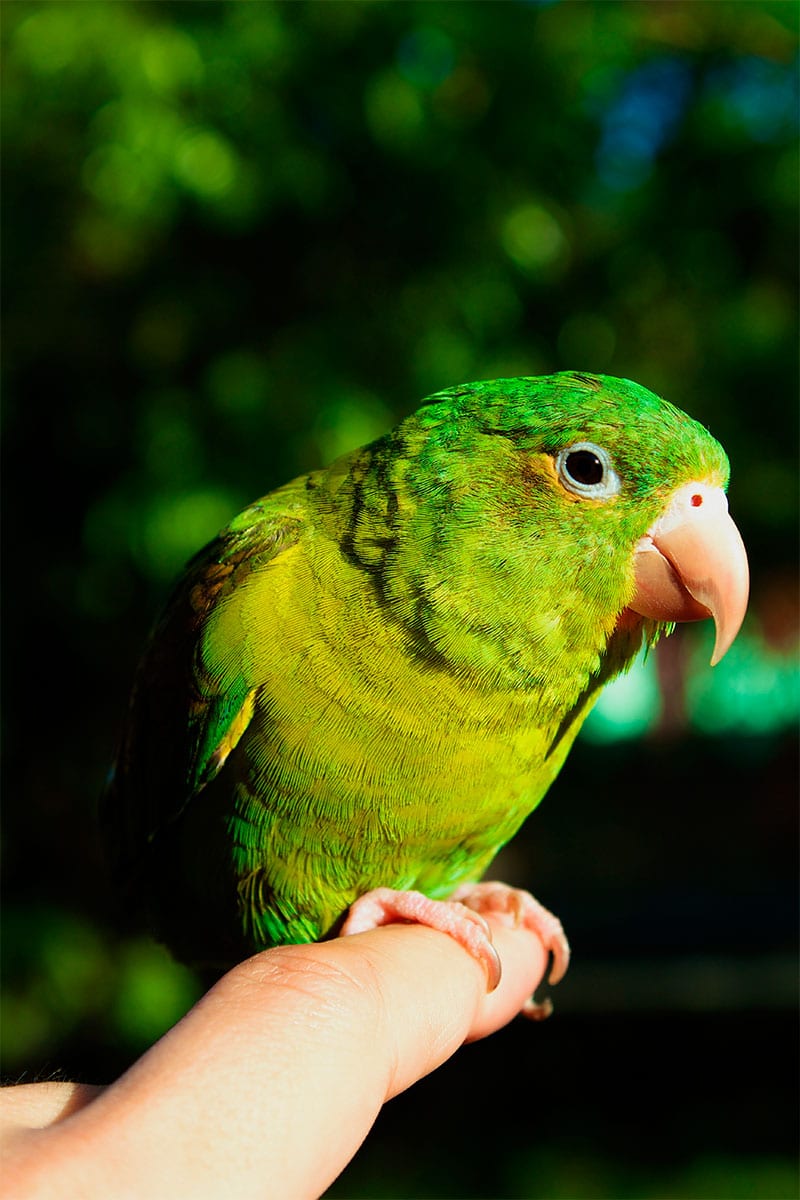
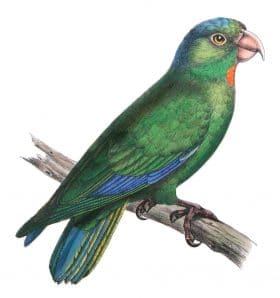
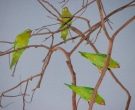
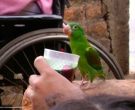
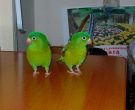
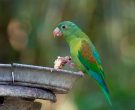

Very nice this parakeet, We have one that we found when a dog was going to kill him, that already more than one year, really good loving, grateful and scream…hehehehe! very good companion although a bit jealous.